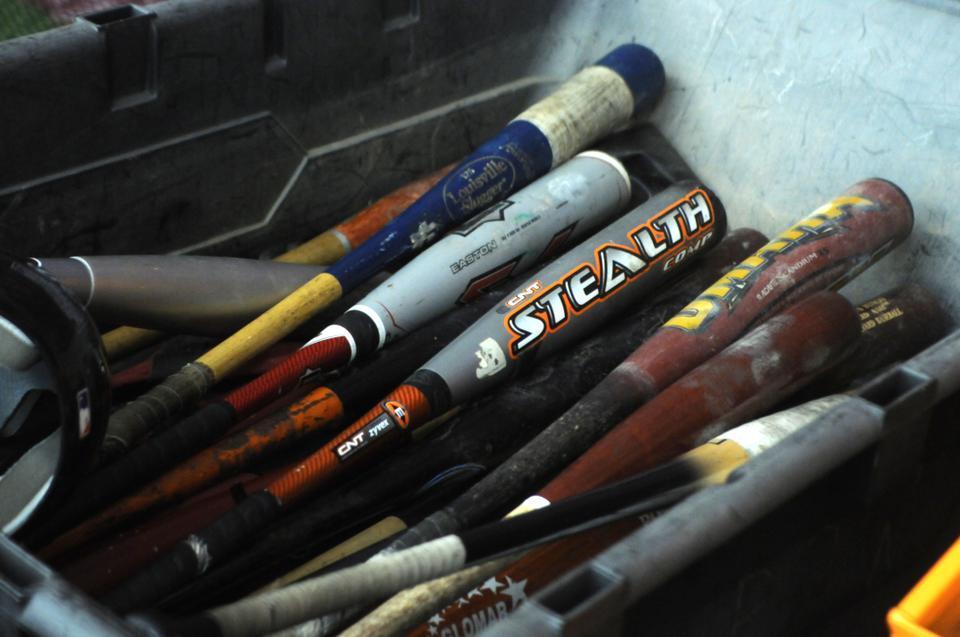
News
Cambridge Residents Slam Council Proposal to Delay Bike Lane Construction

News
‘Gender-Affirming Slay Fest’: Harvard College QSA Hosts Annual Queer Prom

News
‘Not Being Nerds’: Harvard Students Dance to Tinashe at Yardfest

News
Wrongful Death Trial Against CAMHS Employee Over 2015 Student Suicide To Begin Tuesday

News
Cornel West, Harvard Affiliates Call for University to Divest from ‘Israeli Apartheid’ at Rally
Going Batty: NCAA Power Outage
New bat regulations mean fewer home runs across the league and less of that spring ‘sweet spot’ sound

For most baseball players, spring officially begins with the high-pitched “ping” of a ball hitting a graphite or aluminum bat. Yet, players, coaches, and fans alike will have to adjust to a new, duller sound of bat-to-ball contact due to the NCAA’s new bat regulations. Effective Jan. 1, 2011, bats used in NCAA competition will have a different standard, making metal bats behave more like wooden ones.
The new testing system is called the Bat-Ball Coefficient of Restitution, or BBCOR. Unlike the previous Ball Exit Speed Ratio (BESR) standard that measured the exit speed of the ball compared to the incoming ball speed and swing speed, BBCOR measures what the ball and bat do on actual impact. In essence, BBCOR measures the “bounciness” of the ball when it comes into contact with a bat. When a ball hits an aluminum bat, the barrel compresses a small amount, causing the ball to “bounce” back quickly. This is known as the trampoline effect. In order to reduce the significance of the trampoline effect, NCAA regulations prohibit a bat from having a BBCOR coefficient higher than 0.500, which is about the same as a wooden bat.
Keeping a low BBCOR coefficient means a change in the composition of aluminum bats and, more significantly, a reduced “sweet spot” of the bat. New bats will approximately have a three-inch sweet spot as opposed to the previous five inches. Batters will be forced to make more accurate contact with the ball in order to get the same results as they could have gotten with the old bats.
“It’s pretty close to swinging with wood,” Harvard coach Joe Walsh said. “They’ve taken the thump out of the aluminum, and I think that you’re just not going to see the home-run ball in college baseball that you’ve seen in the past.”
Taking the “thump” out of metal bats is exactly what the NCAA is trying to do, hoping that the new bats will increase player safety, specifically for pitchers. With the old bats, balls would come flying at pitchers at an average speed of 93 mph, sometimes reaching up past 100 mph. Pitchers would have little to no time to react to the high-paced balls careening toward them, creating highly dangerous situations. The new bats reduce the exit speed of the ball off of the barrel, giving pitchers and other athletes on the diamond more time to move to protect themselves.
Besides increasing the safety of the players, the substantially smaller sweet spot and lower ball exit speed are also expected to lead to fewer hits, home runs, and scored runs. Batters will need to refine their hitting skills in order to accommodate for the increased difficulty in making contact. Some teams will be forced to change their game plan to adapt to this decrease in offensive power. For example, instead of having a big-hitting mentality, teams may need to hit and run, bunt, or steal bases more often. Defensively, players will need to polish their fielding skills and be ready for more in-field hits as opposed to high fly balls.
On the other hand, the new bats do not pose an offensive problem for everybody. Some teams, like the Crimson, may even receive a slight advantage from the new bats.
“We weren’t a team last year that hit a ton of balls out [of the park],” said junior Jeff Reynolds, who batted a .359 average in the 2010 season. “So I think if anything, it plays into our hands a bit because we’re not going to have to adjust our game as much as other teams.”
With the new aluminum bats being made according to the same BBCOR standard as wooden bats, people are starting to wonder what is stopping colleges from only allowing wooden bats. Although some coaches and players are angry about the new bat standard and its close similarity to that of the wooden ones, not everyone is upset. In fact, some, like Walsh, endorse wooden bats.
“I just want to tape practice someday with only wood bats and balls coming off,” Walsh said, “And you know how they sell the waterfall music and stuff in those Brookstone stores? I just want to get the bats’ wood sound and put it on the headphones.”
Want to keep up with breaking news? Subscribe to our email newsletter.
